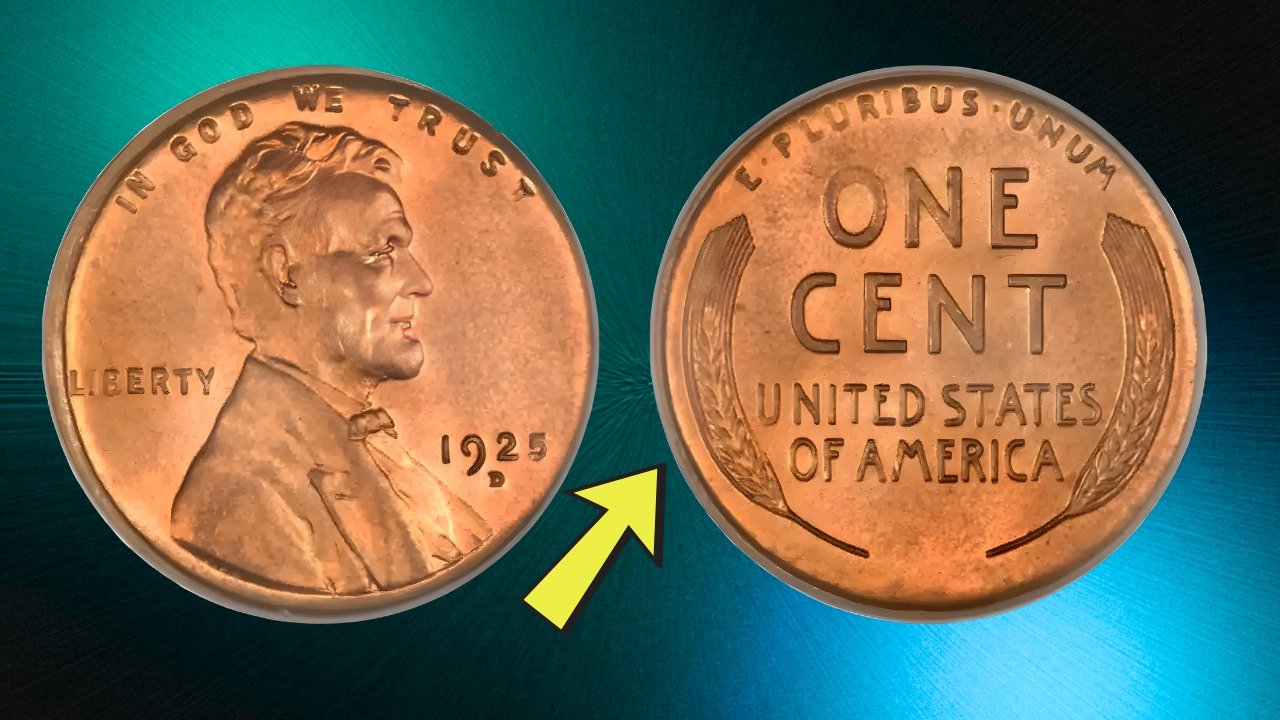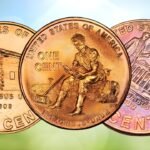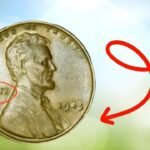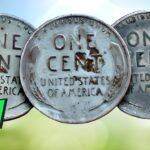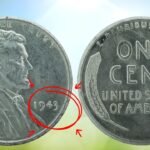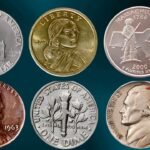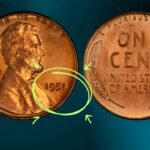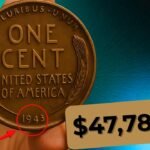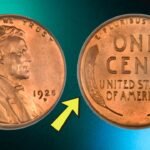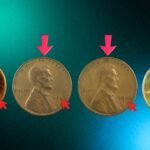If you’ve ever sifted through an old coin jar or rummaged through your grandparents’ drawers, there’s a good chance you’ve stumbled upon a little brown coin with two wheat stalks on the back. That’s right — the Wheat Penny. Officially known as the Lincoln Wheat Cent, it’s one of the most beloved and iconic coins in American history. Minted from 1909 to 1958, these small copper discs carry not only monetary value but also a deep sense of nostalgia and patriotism.
Let’s take a journey through the fascinating history of the Wheat Penny — why it was created, what makes certain ones so valuable, and why collectors today still chase after them with such passion.
The Birth of a Classic: The 1909 Lincoln Cent
Back in 1909, the U.S. Mint wanted to celebrate the 100th anniversary of Abraham Lincoln’s birth. It was a big deal — after all, no U.S. coin had ever featured a real person’s face before. Designer Victor David Brenner was commissioned to create the portrait, and his design replaced the long-running Indian Head cent.
The coin’s obverse (front) displayed Lincoln’s right-facing profile, while the reverse featured two simple wheat ears curving gracefully around the words “ONE CENT.” That’s how the coin earned its nickname — the “Wheat Penny.”
Interestingly, Brenner’s initials V.D.B. appeared on the bottom of the reverse side of the earliest 1909 coins. But this sparked controversy — people thought the initials were too prominent. So, partway through the year, the Mint removed them. This resulted in two variations of the 1909 penny: the 1909 V.D.B. and the 1909 No V.D.B..
And guess what? That tiny design change made a huge difference in value later on.
Why Collectors Love the Wheat Penny
Honestly, part of the charm comes from its simplicity. The Wheat Penny feels personal — a small, sturdy reminder of Lincoln’s integrity and America’s resilience through two world wars and the Great Depression.
But on the flip side, for collectors, it’s all about rarity and condition. Coins struck at the San Francisco Mint (marked “S”) or during specific years can be worth hundreds or even thousands of dollars.
For example, the 1909-S V.D.B. is a superstar in the world of numismatics. Only about 484,000 of them were minted, making it one of the most coveted coins in American history. Another standout is the 1914-D, which can fetch several thousand dollars in top condition.
Wartime Pennies: The 1943 Steel Cent
One of the most curious moments in the Wheat Penny’s history came during World War II. Copper was needed for ammunition and military supplies, so in 1943, the Mint produced pennies made of zinc-coated steel.
These coins looked silver rather than brown, which confused plenty of people. And because steel rusted easily, they didn’t age well. After a single year, the Mint switched back to copper.
However, a few copper pennies from 1943 were mistakenly struck — and if you ever find one of those, you’re looking at a small fortune. A genuine 1943 copper Wheat Penny has sold for over $200,000 at auction.
The End of an Era: 1958 and Beyond
After nearly 50 years, the Wheat Penny was retired in 1958, replaced in 1959 by the Lincoln Memorial Cent to mark the 150th anniversary of Lincoln’s birth.
Yet, collectors never stopped loving the Wheat Penny. Its coppery glow, the timeless design, and the connection to American history make it one of the most collected coins in the world. Even today, millions of people hunt for hidden gems in old coin rolls, hoping to rediscover these copper treasures.
Quick Value Guide
| Year / Type | Mint Mark | Approx. Mintage | Average Value (Fine Condition) | High-Grade Value (Uncirculated) |
|---|---|---|---|---|
| 1909 V.D.B. | None | 27.9 million | $10–$20 | $100+ |
| 1909-S V.D.B. | S | 484,000 | $700+ | $1,500–$2,500+ |
| 1914-D | D | 1.19 million | $150–$300 | $2,000+ |
| 1943 Steel Cent | P/D/S | Over 1 billion | $0.10–$1 | $5–$15 |
| 1943 Copper Cent (rare) | P | Unknown (few dozen) | $100,000+ | $200,000+ |
| 1958 (final year) | P/D | Over 1 billion | $0.10–$0.25 | $5–$10 |
Why You Might Have One Without Knowing
Here’s the thing — millions of Wheat Pennies are still out there. They often slip into circulation through estate sales, coin jars, or forgotten piggy banks. Many look ordinary, but some could be hiding valuable minting errors or rare dates.
If you ever find one, don’t rush to clean it — collectors prefer coins in their natural, unpolished state. Cleaning can actually reduce its value dramatically.
The Sentimental Value
Beyond money, there’s something genuinely heartwarming about the Wheat Penny. It connects generations — grandparents passing down little stories, kids discovering history through copper coins. Each one has circulated through countless hands, carrying untold stories of America’s past.
To be fair, not every Wheat Penny will make you rich, but each one is a piece of living history.
FAQs
1. What years were Wheat Pennies made?
They were minted from 1909 to 1958 before being replaced by the Lincoln Memorial design.
2. What is the rarest Wheat Penny?
The 1909-S V.D.B. and the 1943 copper cent are considered the rarest and most valuable.
3. Are Wheat Pennies made of pure copper?
Mostly yes. Until 1942, they were 95% copper, with small amounts of tin and zinc. In 1943, they were made of steel due to wartime shortages.
4. Should I clean a Wheat Penny before selling it?
No! Cleaning can damage the coin’s surface and significantly lower its value.
5. How can I tell if my Wheat Penny is valuable?
Check the year, mint mark, and condition. Rare dates (like 1909-S, 1914-D, 1922 no D, or 1943 copper) are especially sought-after.
